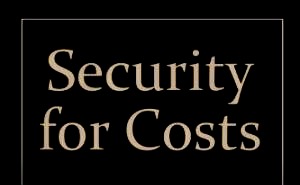Poulk Estate 2018 BCSC 1321 is a good review of the law relating to section 58 of WESA and after a review of the facts and law, found that the said curative provisions of section 58 could not be applied.
The deceased was admitted to hospital where he underwent surgery for bowel obstruction where it was discovered he had bowel cancer and he died days later.
The deceased had only one child, the applicant daughter and he was not married at the time of his death.
The deceased had distanced himself from his daughter after separating from her mother when she was less than one year old.
The daughter had attempted to re establish contact with the deceased when she was 16 years old but the relationship did not develop, and at the time of his death the deceased and his daughter had little contact with each other.
A will was drafted following the surgery and it purported to leave the deceased’s estate to his four siblings in equal shares. The will was not drafted by the deceased and it was not signed by him prior to his death.
The daughter sought an order under section 58 WESA seeking determination of whether the will represented the intention of the deceased.
The will was a fill in the blanks form that was not completed by the deceased.
It was not disputed that the will did not meet the requirements of validity as set out in section 37 of WESA.
The will was not completed by the deceased and it was inferred that it was completed by his sister, the will was not signed by the deceased, and there was nothing on the face of the will to indicate the deceased knew and approved of the contents of the will.
Absence of any objective evidence that the deceased knew and approved the contents of the will was particularly concerning is the will was drafted by one of the beneficiaries and was not consistent with previously expressed intentions of the deceased.
The deceased long time friend opposed the deceased was told by him that he was going to will everything to his daughter.
Notes of the social worker in the hospital were troubling to the court, as they suggested that it was the family of the deceased who are focused on preparing the will, rather than the deceased himself, and that the deceased wanted some time to think. Even if there was sufficient evidence to establish the deceased knew and approved the contents of the will, it was far from clear that the will was fixed and final as to the expression of the deceased testamentary intention. It was clear that the deceased might not have appreciated the severity of his illness or imminence of his death.
The will departed from the requirements for validity in section 37 of WESA to a significant degree, and the evidence fell far short of establishing that the will was final and authentic.
On the balance of probabilities, the court found that the will did not represent a deliberate and final expression of the deceased testamentary intentions, and refused to invoke the provisions of section 58 WESA “to cure“ any deficiency.
The court followed the leading case in British Columbia Re Young 2015 BCSC 182 at paragraph 17:
“S 58 is a curative provision. It confers a discretion on the court to relieve against the consequences of noncompliance with testamentary formalities in the record, document or writing or marking on a will or document”. And prescribed circumstances, section 58 permits the court to address and cure issues of formal invalidity in such documents. It cannot, however, be used to uphold the will that is invalid for substandard reasons such as testamentary incapacity or undue influence.
The court also referred to Re Lane estate 2015 BCSC were the court summarized the principles from the Manitoba decision George v Daily that has largely been followed in British Columbia in decision such as Re Young.
1) The standard of proof on an application under the curative provision is proof on a balance of probabilities
2) the greater the departure from the requirements of formal validity, the harder it may be for the court to be satisfied that the document represents the deceased testamentary intention;
3) the requirements for formal validity of a will serve several purposes or functions, including an evidentiary function by providing the court with reliable and permanent evidence of testamentary intention and the terms of the will; and a cautionary function by impressing upon the testator the solemnity, finality, and importance of his actions in making his last will and testament the evidentiary and cautionary functions are particularly relevant to the determination of whether or not our writing or document embodies the testamentary intentions of the deceased not every expression made by a person, whether orally in writing, concerning the disposition of his or her property on death embodies his or her testamentary intentions
The court held at paragraph 65:
The term “testamentary intention” means much more than a person’s expression of how he would like his or her property to be disposed of after death. The essential quality of the terms that there must be a deliberate or fixed and final expression of intention as to the disposal of his or her property on death Bennett v Molinary v Winfrey (1961) SCR 91










